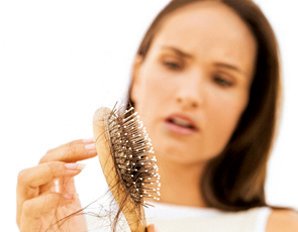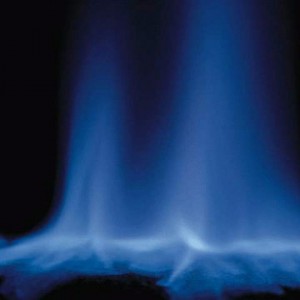Posts Tagged ‘hair growth’
Friday, March 4th, 2011
 Many patients that come in to my office have a common complaint; hair shedding (some even bring in a ball of hair they have collected from their brush and bathroom floor) and in most cases they are women with long hair. For the most part hair shedding alone is not a sign of hair loss. Shedding is losing thick hair that has completed its growth phase and started its resting phase. Many patients that come in to my office have a common complaint; hair shedding (some even bring in a ball of hair they have collected from their brush and bathroom floor) and in most cases they are women with long hair. For the most part hair shedding alone is not a sign of hair loss. Shedding is losing thick hair that has completed its growth phase and started its resting phase.
- Examples of Normal Hair Shedding
All humans experience a level of hair shedding. It can be up to 100 to 200 hairs per day. Hair shedding is sometimes more exaggerated in people who have had a large surgery, trauma, experienced physiological or emotionally stressful events and women who have recently delivered a child. This is called Telogen Effluvium (excessive temporary loss of telogen hair). In most cases hair shedding is typically temporary and the affected hair will grow back within a few months. There is no cause for concern, unless you have a more visible scalp or thinning of the scalp hair. In which case, you should come in to see a certified hair restoration surgeon.
- The 3 Stages of Human Hair Growth
- Anagen ( Growing stage)
- Catagen (Transitional stage)
- Telogen ( Resting stage)
- Active Hair Loss Determined by Miniaturization Study
Almost every patient that visits US Hair Restoration will have a miniaturization study performed on them, to evaluate their degree of the fineness of their scalp hair which are signs of active hair loss, or in other words scalp hair miniaturization. People with active hair loss show 20-30% more thinning hair than the average person who experiences normal hair shedding. If you feel that you are experiencing active hair loss, we recommend you come into one of our five offices in California( San Francisco, San Diego, Orange County, Beverly Hills and Encino), for a free consultation.
Tags: active hair loss, free consultation, hair growth, hair loss, miniaturization study, normal hair shedding, resting phase, scalp hair miniaturization, telogen efflevium, us hair restoration
Posted in Beverly Hills hair transplant, California hair transplant, Orange County hair transplant, San Diego hair restoration, San Francisco Hair Transplant, Uncategorized, women hair loss | No Comments »
Saturday, November 14th, 2009

In the latest issue of the Journal of Internal Medicine, a new research study was published: “A Rare Complication: New Hair Growth Around Healing Wounds.” This study is related to Dr. Mohebi’s personal research at Johns Hopkins Medical Institute on gene therapy techniques and wound healing and how it affected the growth of mice hair.
The journal study was about a person who had hair growth surrounding a healing wound at Guangxi Medical University in Nanning, China.
The doctors involved in the study mention an incident in which hair growth occurred around a wound during the process of wound healing. Hair growth after wound healing is an atypical occurrence. This is the first time such an event had ever been recorded in scientific literature.
The doctors concluded that the wounds damaged the hair follicles and epidermis, but that it was possible for both to repair themselves if there was a suitable physical and chemical micro-environment. The doctors say that this new hypothesis may very well lead to new methods of managing hair loss, tissue engineering, and the regeneration of other organs.
At the laboratory of Johns Hopkins Medical Institute, and as part of my overall research, I did a major investigative study on hair growth as a byproduct of wound healing. On a few rats, after witnessing wound healing, to my delight, I found that some gene therapy techniques stimulated the hair growth.
My attention was on hair growth only and, coincidentally, our results matched other hair growth-wound healing studies, during 2005 to 2006. At the University of Pennsylvania, Dr. Cotsarelis, along with his contemporaries, first made public a study on the relationship between wound healing and hair growth through activation of the molecular pathway WNT.
Other similar studies have called attention to the fact that hair restoration through tissue engineering, hair multiplication, and gene therapy might one day happen and that we just may have a breakthrough a lot sooner than we expected all these years.
Parsa Mohebi, M.D.
Medical Director
US Hair Transplant
Tags: gene therapy, hair growth, hair loss, hair restoration, wound healing
Posted in California hair transplant, hair transplant, men hair restoration, women hair loss | No Comments »
Friday, October 30th, 2009

The field of hair growth and hair restoration has introduced a new player to its lineup: TRH (Thyrotropin-Releasing Hormone). It is likely TRH may turn out to be a heavy hitter in the fast-growing hair transplant industry.
Just recently, a new finding in hair elongation and the hair growth cycle was published in the Journal of the Federation of American Societies for Experimental Biology (The FASEB Journal). The research was conducted in Germany by Dr. Gaspar at the top-ranked University of L’beck, Department of Dermatology and Department of Internal Medicine.
It’s been shown that Thyrotropin-Releasing Hormone (TRH) is one of the crucial elements involved in the hair follicle growth cycle. Thyrotropin-Releasing Hormone is very closely situated to the hypothalamic-pituitary-thyroid axis. This axis stabilizes thyroid hormone synthesis.
Scientists have decided to study whether human hair follicle functions are also modulated by thyrotropin-releasing hormone, because it’s been found in human tissue. According to their findings, the researchers say that the epithelium of human scalp hair follicles expresses not only TRH receptors (TRH-R), but also TRH itself at the protein and gene level.
They found stimulation of organ-cultured hair growth with thyrotropin-releasing hormone stimulates hair follicle elongation, prolongs the hair growth cycle phase (anagen), and antagonizes its termination by TGF-beta2. It also increases proliferation and inhibits the apoptosis of hair matrix keratinocytes.
So, we can conclude from the study that thyrotropin-releasing hormone operates as a legitimate potent hair-growth stimulator. It’s proven to be an ideal discovery tool for identifying functions of thyrotropin-releasing hormone are hair follicles.
Tags: hair growth, hair growth stimulator, hair restoration, Thyrotropin-Releasing Hormone, TRH
Posted in hair loss medication, men hair restoration | No Comments »
Monday, May 4th, 2009
 In a recent article published in the Journal of Investigative Dermatology (January 2009), the Department of Dermatology at the University of L’beck in L’beck, Germany and Zhejiang University in Hangzhou, China had shown that excessive exposure to UV radiation is among the most harmful environmental influences on human skin. There have been findings that direct sunlight and ultraviolet radiation can negatively affect the growth of hair follicles. In a recent article published in the Journal of Investigative Dermatology (January 2009), the Department of Dermatology at the University of L’beck in L’beck, Germany and Zhejiang University in Hangzhou, China had shown that excessive exposure to UV radiation is among the most harmful environmental influences on human skin. There have been findings that direct sunlight and ultraviolet radiation can negatively affect the growth of hair follicles.
There research was conducted on organ-cultured human anagen hair follicles in vitro and were irradiated with UVB, one of two common types of Ultra Violet light. What was observed was reduction of hair shaft elongation, premature catagen entry and reduced hair matrix keratinocyte proliferation.
When the hair follicles were exposed to UVB at lower powers, apoptotic cell death prevailed and at higher power necrotic cell death was predominant. Investigators at both universities corroborated and concluded the UVR does modify hair growth and cycle, can promote cell death and encourages regulatory events in human hair follicles in vitro. The human organ model, which is composed of living human tissue in situ conditions, was used in their findings and encourages its further use for general investigation of UV effects.
Because of these relevant findings, we recommend all of our patients, pre and post operative, to minimize sun exposure on unprotected parts of their body and especially their scalp area. We personally have a No Sun Exposure policy for 6 months after hair transplant surgery for all our patients.
Tags: hair growth, hair loss, sun exposure, UV radiation
Posted in hair loss products, hair transplant | No Comments »
|
|
 Many patients that come in to my office have a common complaint; hair shedding (some even bring in a ball of hair they have collected from their brush and bathroom floor) and in most cases they are women with long hair. For the most part hair shedding alone is not a sign of hair loss. Shedding is losing thick hair that has completed its growth phase and started its resting phase.
Many patients that come in to my office have a common complaint; hair shedding (some even bring in a ball of hair they have collected from their brush and bathroom floor) and in most cases they are women with long hair. For the most part hair shedding alone is not a sign of hair loss. Shedding is losing thick hair that has completed its growth phase and started its resting phase.


